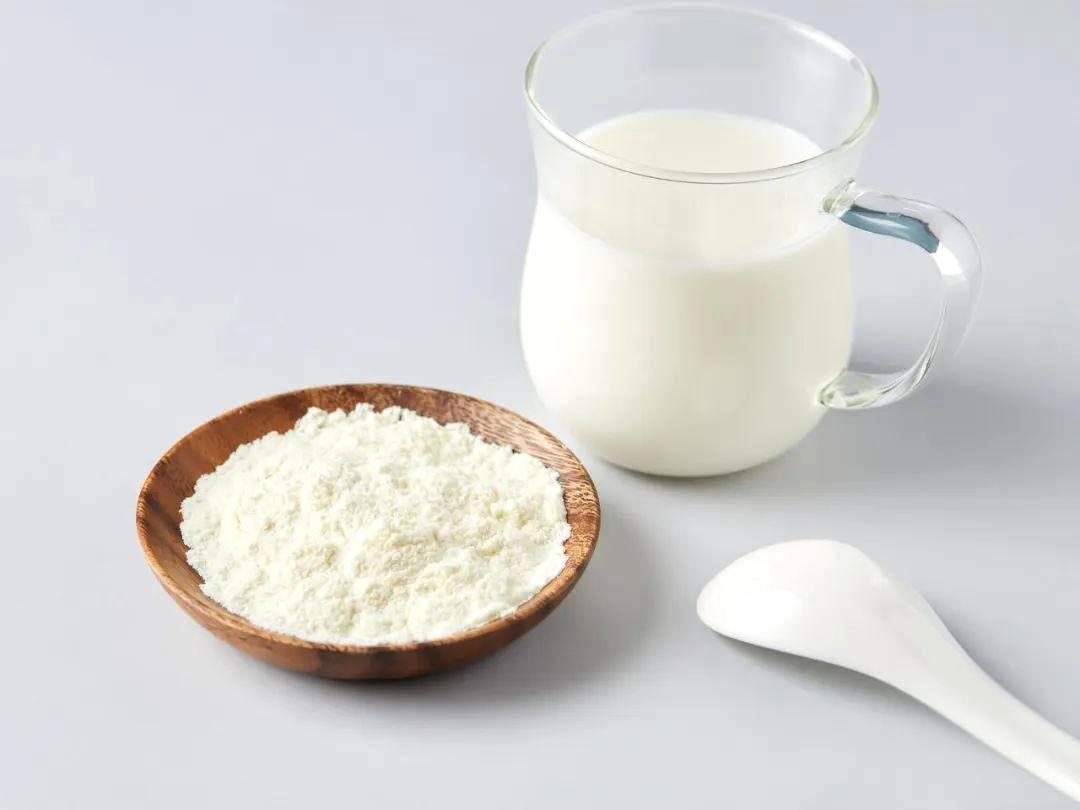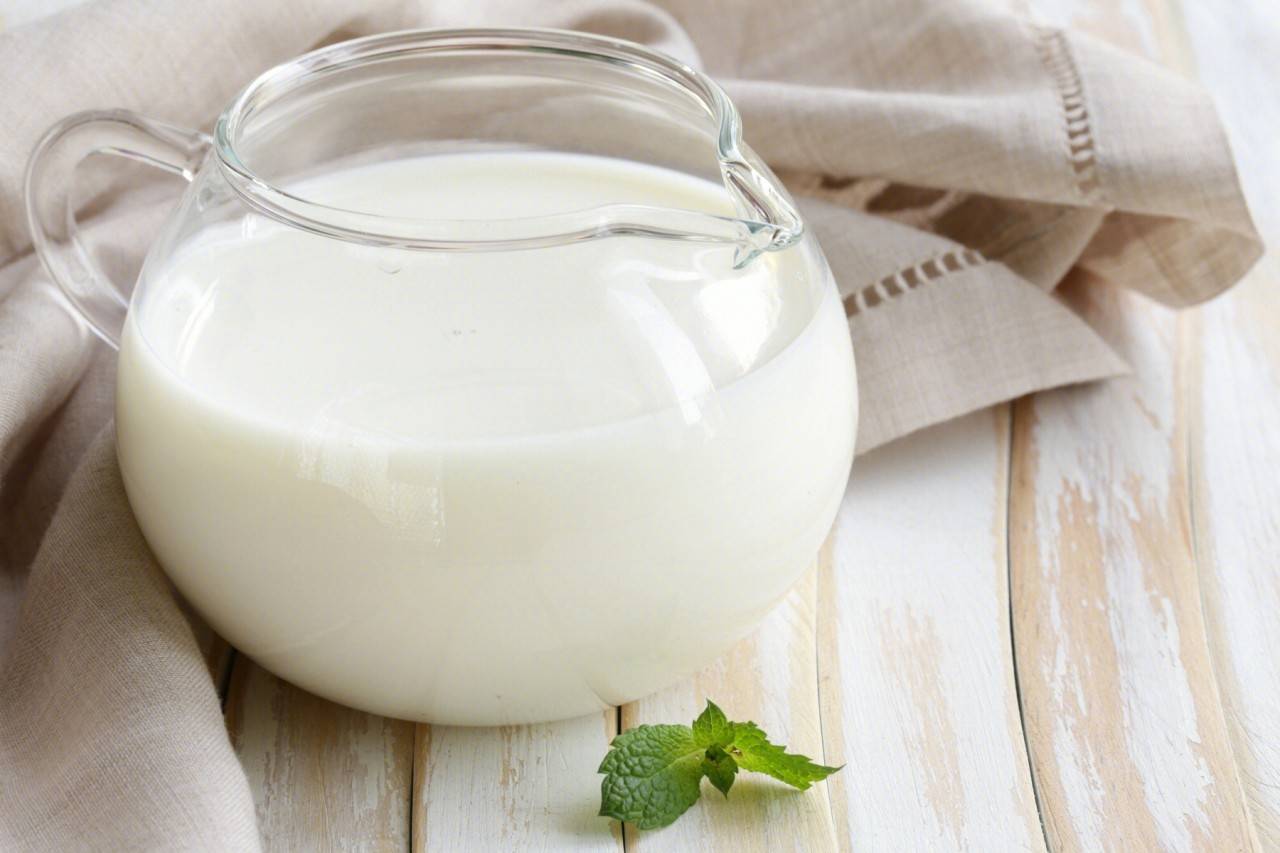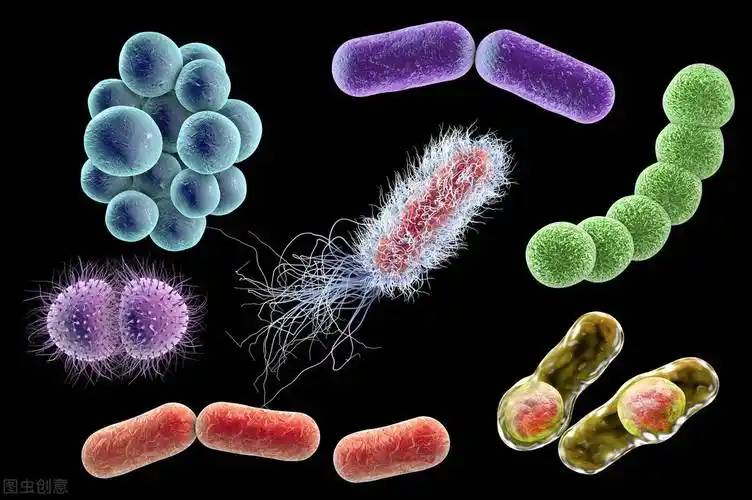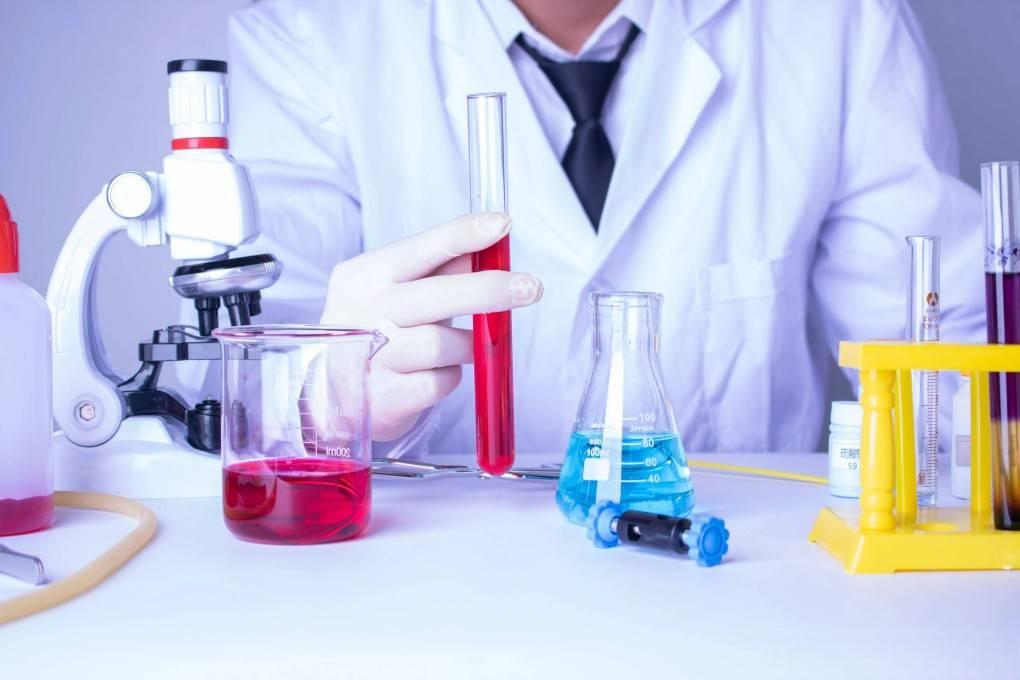What Are the Benefits of Galacto Oligosaccharides?
Galacto-oligosaccharides (GOS) are a functional oligosaccharide with a relative sweetness of 30% to 40% of sucrose. They are present in trace amounts in animal milk, but in higher amounts in human breast milk, and are not digested by digestive enzymes in the human body. GOS can be synthesized from lactose as a raw material. Catalyzed by β-galactosidase, hydrolysis and trans-galactosylation occur, through a mechanism of retention, a covalent bond is formed between the galactose group and the enzyme on the galactose group of the lactose molecule, and then the galactose group is transferred to a nucleophilic acceptor, mostly in the form of a β(1-4) bond [a few in the form of a β(1-6) bond)] and linked to 1 to 7 galactose molecules, thus forming a mixed impurity oligosaccharide composed of glucose and lactose. GOS derived from lactose is considered safe and is allowed to be added to foods1!
GOS, unlike non-functional oligosaccharides, belongs to the functional factor category of prebiotics. It has excellent physicochemical properties and unique physiological functions, and is currently used in infant nutrition formula foods, dairy products, pastries, biscuits, beverages, candy and other foods [2,3].
This article details the role of GOS in maintaining intestinal microbial balance, resisting intestinal viral infections, participating in immune system regulation, inhibiting tumor cell production, improving mineral absorption in the human body, and improving cardiovascular disease and other physiological mechanisms. It provides theoretical support for the future development of GOS in functional foods and its application in the field of health care.
1 Ensuring intestinal health
1.1 Maintaining intestinal microbial balance
GOS is a prebiotic. Recently, experts have come to a new understanding of prebiotics: a substrate that is selectively utilized by beneficial host microorganisms and has a beneficial effect on health14]. Intestinal prebiotic fermentation involves a symbiotic mechanism in which the fermentation products of one or more bacteria provide a substrate for other microorganisms. This complex cooperative behavior of intestinal microorganisms is closely related to health.5 In the intestine of a healthy adult (taking the large intestine as an example), there is a microflora of approximately 10⁷ to 10¹² CFU/mL, including the genera Bacteroides, Clostridium, Bifidobacterium, and Bacillus. An imbalance in the intestinal flora will pose a threat to human health [6]. For example, an overgrowth of intestinal microorganisms, especially those in the Firmicutes phylum, such as Proteobacteria, Bacteroides, and Actinobacteria, is an important risk factor for osteoporosis [7]. The participation of probiotics will effectively reduce this risk, and GOS will effectively slow down osteoporosis [8].
The intake of prebiotics such as GOS can selectively promote the proliferation of beneficial bacteria in the intestine, inhibit the proliferation of pathogenic bacteria, and maintain the balance of intestinal flora. The proliferation of beneficial bacteria promoted by a series of prebiotics such as GOS induces the expression of the LacS lac operon, which encodes a transport protein and a lactose hydrolase. While providing a carbon source for the growth of probiotics, GOS can be converted into short-chain fatty acids (acetic acid, propionic acid, butyric acid, etc.), lactic acid, succinic acid and gases (carbon dioxide, methane, hydrogen, etc.) during the process of regulating the intestinal flora. A small amount of formate, acetate, pentanoate, methyl 2-butyrate and isovalerate can also be formed. Among these short-chain fatty acids, those that play an important role in physiological mechanisms such as immune regulation, fat metabolism and mineral absorption include formate, acetate, pentanoate, methyl 2-butanoate and isovalerate [10].
GOS can effectively promote the growth of bifidobacteria and lactobacilli []. Bifidobacteria and lactobacilli are probiotics in the intestine. Pathogenic bacteria such as Salmonella and Shigella bind to the intestinal mucosal surface, destroy the intestinal mucosa and invade the intestine to multiply. Probiotics can bind tightly to the epithelial cells of the intestinal mucosa through phospholipids and form a protective barrier of biofilm on the surface of the intestinal mucosa, which can effectively prevent the invasion, colonization and reproduction of harmful bacteria in the intestine [3.41.
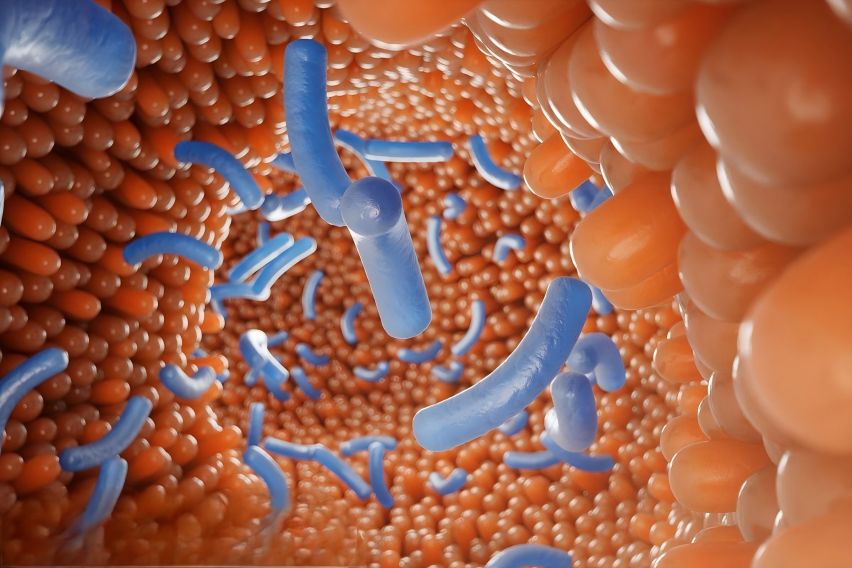
GOS can resist the effects of gastric acid, bile salts and digestive enzymes, eliminate interference with the digestive system, selectively enter the large intestine, and be used by bifidobacteria and other beneficial intestinal bacteria, while hardly being used by harmful bacteria. It is considered to be “undigestible oligosaccharides"[12]. Probiotics can break down GOS into substances such as lactic acid, acetic acid and antibiotics. At the same time, the beta-galactosidase they produce can degrade the complex polysaccharides of intestinal mucosal epithelial cells, lower the pH in the intestines and inhibit the growth of harmful bacteria. When the intestinal probiotics proliferate using GOS, they can produce extracellular polysaccharides, which adhere to harmful bacteria and together protect intestinal health [13]. Hong et al. [14 found that compared with the group that was given a single dose of Bifidobacterium, the group that was given a diet with 1% (by mass) high-purity GOS was able to produce more Bifidobacterium in the intestine.
GOS can also inhibit the growth of relatively harmful microorganisms. Children with autism are more likely to have an imbalance in the intestinal flora, with higher levels of Clostridium and lower levels of Bifidobacteria, than non-autistic children [15]. Experiments have confirmed that GOS can increase the proliferation of Bifidobacteria and Lactobacilli, inhibit the proliferation of microorganisms such as Clostridium, Bacteroides and Veillonella, and change the production of short-chain fatty acids.
1.2 Protection against enterovirus infection
Rotavirus is the main cause of severe dehydrating diarrhea in children under the age of 5 worldwide [16]. GOS can effectively protect against rotavirus infection and alleviate diarrhea symptoms [17]. Researchers fed newborn mice with a rotavirus infection model fermented milk supplemented with a short-chain galacto-oligosaccharide/long-chain fructo-oligosaccharide (scGOS/lcFOS 9:1) structure similar to human milk oligosaccharides. Follow-up studies found that the virus-infected mice had reduced diarrhea symptoms, and that fermented milk supplemented with this prebiotic mixture could effectively bind the virus and reduce its binding clefts [18].
2 Participate in immune system regulation
GOS can be converted into short-chain fatty acids in the intestine, which promote the growth of probiotics and play an important role in the immune regulation mechanism. GOS and probiotics together reduce intestinal wall permeability, effectively prevent the migration of pathogens from the intestine to the mesenteric adipose tissue and blood, reduce systemic inflammation, and regulate the host immune response. An imbalance in the intestinal flora will seriously affect the intestinal barrier function and the balance of the immune system [19]. The NF-κB (nuclear factor kappa B) signaling pathway is considered to be an important center of the immune response.
Short-chain fatty acids can enter cells to regulate immune homeostasis and inhibit the production of pro-inflammatory factors such as high-sensitivity C-reactive protein, tumor necrosis factor-a (TNF-a), interferon-y (IFN-y), interleukin (IL), etc., by regulating the NF-KB signaling pathway. Among them, butyric acid can inhibit the expression of chemokine MCP-1 and inhibit the antigen associated with the immune function of lymphocytes. Short-chain fatty acids play an important role in maintaining the intestinal barrier. Mucin is a key factor in maintaining the barrier function of the intestinal epithelium. Short-chain fatty acids (especially butyric acid) can regulate the promoter of MUC2 to promote the synthesis of MUC2 [15.6]. Adenosine monophosphate-activated protein kinase (AMPK) is closely linked to intestinal barrier function [5.6.10]. Some intestinal bacteria can promote the production of IL-1, IL-6, IL-12, etc., and induce the secretion of IgA [14.5]. GOS, short-chain fatty acids, and the intestinal microbiome work together to regulate the body's immune response.
Perdijk et al. l²0] confirmed in experiments that GOS regulates the barrier function of epithelial cells. Wang et al. 12 found that GOS can produce more short-chain fatty acids in suckling piglets and regulate immune homeostasis by regulating the gene expression of pro-inflammatory factors (IL-8 and IL-10) and barrier proteins (ZO-1 and occludin Claudin-1) by regulating the NF-KB and AMPK signaling pathways. GOS may promote the regulation of the immune response associated with the alleviation of diarrhoea symptoms.
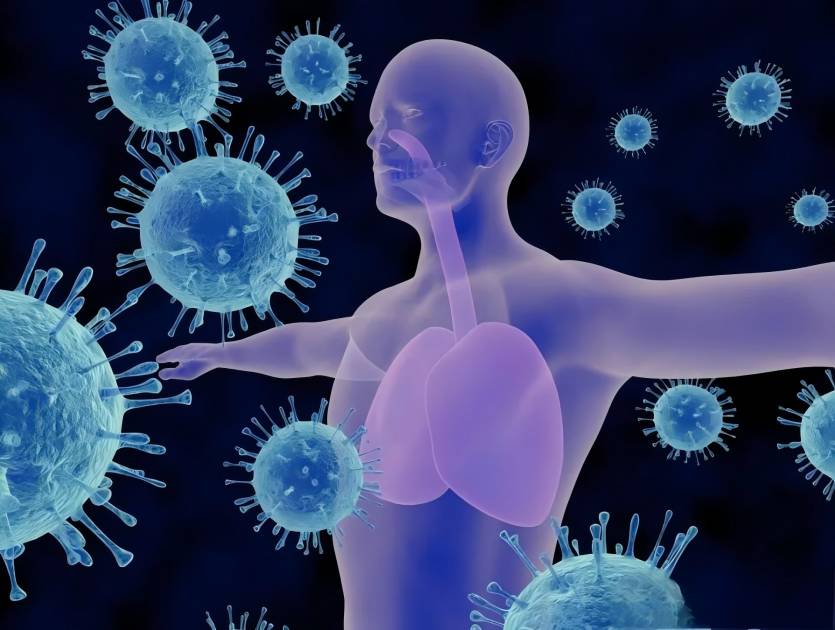
It was found that 14 days after rotavirus infection, the GOS group of mice had increased levels of intestinal IgA and significantly higher anti-rotavirus IgM [18]. Researchers fed a prebiotic mixture of 2'-fucosyllactose (2'-FL) and scGOS/lcFOS to mice at different stages of their lives, and when they were adults, they were vaccinated with a trivalent influenza vaccine. The results showed that a prebiotic diet can regulate the balance of intestinal flora and promote a vaccine-specific antibody response [22]. Izumi et al. [23] supplemented neonatal mice with milk powder containing three types of oligosaccharides (lactulose, raffinose and GOS) and Bifidobacterium. 14 days after birth, the prebiotic oligosaccharide/Bifidobacterium diet group had 29% more regulatory T cells (Tregs) in the colonic lymph nodes increased by 29% in the regulatory T cells (Tregs) content of the colon lymph node cells in the prebiotic oligosaccharide/Bifidobacterium group compared to the Bifidobacterium group. Studies have shown that GOS can promote intestinal immunity.
3 Suppress tumor cell production
GOS, as a prebiotic, can induce the proliferation of beneficial bacteria such as Bifidobacterium and Lactobacillus. Its metabolites, short-chain fatty acids, play a role in anticancer immune mechanisms such as metabolism, epigenetics, signal pathways, and gene expression in colon epithelial cells [24,25], as shown in Figure 1. Short-chain fatty acids act as ligands for G-protein coupled receptors (GPRs) ). The three main receptors that bind short-chain fatty acids, GPRs: GPR41, GPR43, and GPR109A, are associated with the intestinal microbe anticancer mechanism [26]. The activation of GPRs inhibits the mechanism of tumor cell formation and has epigenetic and immunological properties that can effectively target colorectal cancer [27]. The activation of GPR43 on regulatory T cells stimulated by short-chain fatty acids inhibits the inflammatory response in the pre-cancerous stage. The deletion of GPR109A downregulates IL-18 and IL-10 and upregulates IL-6 and IL-17. Meanwhile, butyric acid upregulates the expression level of GPR109A and inhibits colon tumor cells [26].
Short-chain fatty acids can inhibit cancer through other mechanisms, such as affecting histone regulation and cell signaling. Most of these regulations depend on gene regulation. For example, butyric acid can upregulate p57 expression in colon cancer cells, thereby inducing apoptosis and inhibiting proliferation. Butyric acid upregulates p57 expression by inhibiting histone deacetylase (HDAC), which increases p57 mRNA transcription, and by downregulating miR-92a levels, which inhibits p57 mRNA degradation [28].
At the same time, short-chain fatty acids can downregulate the expression of MUC4, which is related to tumor cell proliferation and metabolism, and act on the tyrosine kinase (spleen tyrosine kinase, Syk), thereby inhibiting tumor cell survival [29]. The role of intestinal probiotics associated with colon cancer, such as Bifidobacterium and Lactobacillus, is partly due to changes in the short-chain fatty acids produced by bacterial metabolism,301 and partly due to the regulation of the synthesis of toxic and carcinogenic substances by regulating enzyme activities such as β-glucuronidase, azo reductase, and nitroreductase, as well as the effective binding of carcinogens.31 Intestinal probiotics can also inhibit cancer in terms of immunity and cell response [32]. For example, Lactobacillus rhamnosus inhibits cancer cell proliferation by downregulating β-catenin, Bcl-2 and upregulating Bax and p53. Intestinal probiotics can downregulate the proinflammatory factors NF-κB-p65 and COX-2, and can regulate Toll-like receptors (TLRs). For example, Lactobacillus acidophilus can upregulate ZO-1, occludin, MUC2 and TLR2, downregulate TLR4 and COX-2, and affect the activity of antigen-presenting cells (APCs) and the number of CD4+ T cell numbers, increased APC activity and inhibition of helper T (Th) cell activity [33]. This series of regulatory mechanisms plays an important role in the inhibition of colorectal cancer.
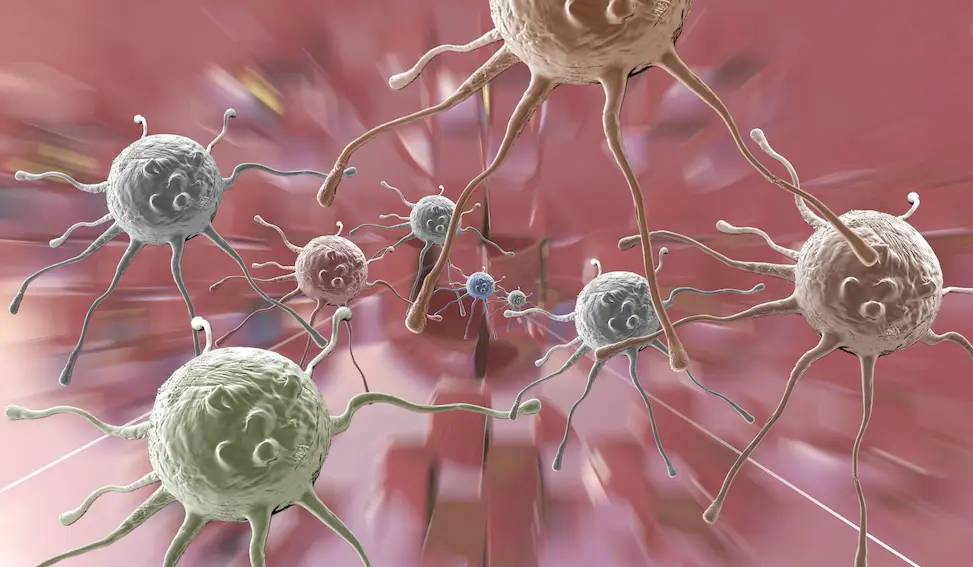
Fernandez et al. fed a colorectal cancer model mouse with drinking water containing 10% (w/w) GOS. After 20 weeks, the digestive tract tissue of the mice was analyzed, and it was found that the number of colon tumor cells in the GOS group was significantly lower. At the same time, genome sequencing showed that the number of relevant pro-inflammatory bacterial families and species was significantly reduced, while the number of beneficial bacteria such as Bifidobacterium was significantly increased. 134]. This study suggests that oral administration of GOS can be an effective treatment for preventing colorectal cancer.
4 Improves mineral absorption in the human body
GOS can increase mineral absorption. During the process mediated by intestinal flora, GOS is converted into short-chain fatty acids and lactic acid, and the pH of the intestinal environment decreases. In an acidic environment, calcium ions, magnesium ions, copper ions, manganese ions and zinc ion salts become soluble. These ions play an important role in the formation of bone matrix components and as cofactors in collagen synthesis. GOS also protects the intestinal mineral absorption surface and thus protects bone health [35-38].
The short-chain fatty acids produced by GOS are absorbed into the microvilli. Lactic acid and butyric acid bind to the G-protein-coupled receptors GPR41 and GPR43, which are growth factors for intestinal cells and colon epithelial cells, and increase the surface area for mineral absorption in the intestine, thereby increasing mineral absorption [39]. Short-chain fatty acids such as butyric acid and propionic acid increase the gene expression of calcium-binding protein-D9k and play an important role in calcium-binding protein synthesis [40]. Short-chain fatty acids affect the synthesis of insulin-like growth factor 1 (IGF1), which promotes bone growth and plays an important role in related signaling pathways [19]. Kaleemullah et al. [41] added GOS (5 g/100 g body weight) to the diet of mice and found that the GOS diet increased the absorption of calcium, magnesium, iron and other ions, thereby contributing to body growth and development.
5 Improve cardiovascular disease
5.1 Regulating lipid metabolism
GOS can control the levels of lipids in the blood and tissues through interactions with intestinal microorganisms [42]. High blood lipids or abnormal blood lipids are likely to induce cardiovascular disease. High levels of low-density lipoprotein cholesterol, lipoproteins rich in triglycerides and low levels of high-density lipoprotein cholesterol are recognized as risk factors for cardiovascular disease (atherosclerosis, coronary heart disease, etc.) [43]. Excessive growth of intestinal microorganisms such as Escherichia coli, Achmania, Christensenia, Eubacterium, Pasteurella, and Vibrio butyricus positively regulates the serum high-density lipoprotein cholesterol level, which can easily lead to hyperlipidemia or abnormal blood lipids [44-46]. Bifidobacteria, Clostridium butyricum, Lactobacillus, Listeria monocytogenes, Streptococcus thermophilus, Bacteroides, Enterococcus faecium, Pseudomonas aeruginosa, etc., are involved in inhibiting the expression of fat synthesis genes, fatty acid oxidation, cholesterol absorption, cholesterol excretion and other biochemical mechanisms [46.47].
GOS can effectively inhibit the activity of hydroxymethylglutaryl-coenzyme A reductase and inhibit endogenous cholesterol synthesis. Short-chain fatty acids reduce cholesterol, fatty acids, triglycerides and low-density lipoproteins by inhibiting the expression of fat-producing genes. At the same time, they can reduce the activity of lipogenic enzymes in the liver and activate the synthesis of intestinal fasting state inhibits fat storage. Angiopoietin-like 4 controls triglyceride deposition and diet-induced obesity [48].
In terms of fatty acid oxidation, short-chain fatty acids affect bile acid receptors (such as membrane-bound G protein-coupled TGR5 receptors and nuclear farnesyl X receptors). TGR5 receptors induce glucagon-like peptide-1 (GLP-1) production, while nuclear farnesyl X receptors inhibits its activity [49, reduces the mass and size of white adipose tissue, and increases fat-specific insulin signaling, which promotes the conversion of fat from synthesis to oxidation [50]. Gut microbes can produce trimethylamine oxide, which can reduce the risk of diseases such as atherosclerosis through sterol and cholesterol metabolism [46, 51]. Microorganisms, including beneficial bacteria, are involved in the enzymatic conversion and regulation of bile acids, cholesterol conversion and excretion [S²]. In a double-blind experiment, people with risk factors for cardiovascular disease were randomly assigned to a placebo group, a maltodextrin group and a GOS diet group. After 12 weeks, the GOS group had significantly lower plasma cholesterol levels than the placebo group [42].
5.2 Uncertainty about the function of blood glucose control
Diabetes mellitus is most commonly type 2 diabetes. Insulin plays a crucial role in glucose homeostasis and blood glucose regulation. Insulin resistance is the main cause of type 2 diabetes. Excessive accumulation of visceral fat can trigger chronic inflammation, high levels of macrophage infiltration, insulin resistance and compensatory hyperinsulinemia. In peripheral tissues, pro-inflammatory factors block insulin signaling and cause insulin resistance [53,54]. Changes in the intestinal microbiota are directly related to type 1 and type 2 diabetes. Type 2 diabetes is associated with an increase in pathogenic bacteria such as Clostridium, β-Proteobacteria, Bacteroides and Desulfovibrio, and a decrease in Bifidobacteria. Type 1 diabetes is prone to an increase in Bacteroides, Clostridium, Veillonella, and a decrease in Lactobacillus, Bifidobacteria, and Prevotella. This imbalance may lead to an increase in lipopolysaccharide (LPS) and a decrease in glucose tolerance [55,561.
Animal experiments have shown that the intestinal microbiota may mediate insulin resistance in type 2 diabetes. Prebiotics or probiotics may promote insulin sensitivity by effectively improving the composition of the intestinal flora, reduce the accumulation of endotoxins in the intestine, and reduce the production of pro-inflammatory factors through the NF-KB signaling pathway, reduce intestinal permeability, and reduce oxidative stress. GOS can produce short-chain fatty acids, which play an important role in glucose homeostasis through various reaction mechanisms . It activates G protein-coupled receptors, induces the release of GLP-1 and peptide yy (PYY), increases insulin, reduces glucagon secretion, and suppresses appetite [54-58]. In theory, GOS may have the potential to resist diabetes, but there is currently insufficient support from relevant clinical trials to effectively confirm this theory.
GOS affects the expression of genes that regulate metabolic pathways and regulates hormone secretion. In the experiment by Hong et al. 14, the serum GLP-1 level in the GOS group increased, and PYY increased, proving that GOS affects the gene expression of GLP-1 and PYY. Izumi et al. [23 showed that GOS can induce the up-regulation of GLP-1 and GLP-2 expression.
Gonai et al. [15 showed that GOS can improve the reduction of bifidobacteria in type 2 diabetes patients and restore bifidobacteria. However, in this short-term experiment, it is not well established whether GOS affects LPS and glucose tolerance. Canfora et al. conducted a double-blind experiment in which 44 overweight or obese (body mass index BMI, 28 -40 kg/m²) men and women with pre-diabetes were randomly assigned to a GOS group or a placebo group. For 12 weeks, the participants added 15 g of GOS or maltodextrin (placebo) with the same energy content to their normal daily diet. The study showed that the amount of bifidobacteria in the feces of the GOS group increased fivefold, but no significant changes in insulin sensitivity were found during the experiment. S8] In another experiment, researchers supplemented the diet of women with 100 mg FOS/500 mg GOS per day for 3 months. The results showed that BMI did not change, fasting blood glucose levels decreased by 10% after 3 months, and total cholesterol levels decreased by 13%. This study shows that GOS and FOS have a positive effect on blood sugar and lipid metabolism l⁵9].
6 Discussion
GOS plays an important role in maintaining intestinal health, regulating immune mechanisms, inhibiting the growth of tumor cells, improving the body's mineral absorption, and regulating lipid metabolism. The only known side effect of GOS is transient osmotic diarrhea caused by excessive intake, which is similar to the symptoms caused by the inability to absorb sugar alcohols or lactose in people with lactose intolerance. However, this does not affect the use of GOS in functional foods.160 GOS also has the following functional advantages: GOS is completely soluble in water, fully soluble in milk and dairy products, has a more suitable taste, is stable in low pH and high temperatures, has low calories, can effectively prevent tooth decay, and reduce constipation. This gives GOS broad prospects in the development of functional foods and the field of health care, benefiting all types of people. GOS can not only be added to infant nutritional formula foods and dairy products, but also to some non-refrigerated juices and other foods. It can not only be used as a sugar substitute to satisfy the sweet tooth of diabetics or obese patients, but also has a positive effect on the dietary needs of people with irregular eating habits, intestinal flora imbalances, diabetes, cardiovascular disease and weight control. It can also be used as a nutritional supplement for the weak and cancer patients. In summary, GOS will play a role in a variety of foods due to its excellent physiological functions.
Reference:
[1] Ministry of Health of the People's Republic of China Announcement, No. 12 of 2007 [EB/OL]. [2011-03-11].
[2] bttp://www.moh.gov.cn/mohbgt/pw10709/200804/18986.shtml.
The 12 Announcement of national health and familyplanning commission of the People's Republic of China,2007 [EB/OL].[2011-03-11]. http://www.moh.gov.cn/mohbgtpw10709/200804/18986.shtml.
[2]Markowiak P,Sliżewska K.Effects of probiotics,prebiotics,and synbiotics onhuman health [J].Nutrients,2017,9(9):1021.
[3]Mohajeri MH,Brummer RJM,Rastall RA,et al.The role of the microbiome forhuman health:From basic science to clinical applications [J].Eur JNutr,2018,57(1):1-14.
[4]George KR,Patra JK,Gouda S,et al.Benefaction of probiotics for human health:A review [J].JFood Drug Anal,2018,26:927-939.
[5]Valdes AM,Jens W,Eran S,etal.Role of the gut microbiotain nutrition and health [J].BMJ,2018,361:k2179.
[6]Fehlbaum S,Prudence K,Kieboom J,et al.In vitro fermentation of selected prebiotics and their effects on the composition and activityof the adult gut microbiota[J].IntJ Mol Sci,2018,19(10):3097.
[7]Wang J,Wang Y,Gao W,et al.Diversity analysis of gut microbiota in osteoporosisand osteopenia patients [J].Peer J,2017,5:e3450.
[8]Weaver,Connie M.Diet,gut microbiome,and bone health [J].Curr Osteoporos Rep,2015,13(2):125-130.
[9]Thongaram T,Hoeflinger JL,Chow JM,et al.Prebiotic galactooligosaccharide metabolism by probiotic lactobacilli and bifidobacteria[J].JAgric Food Chem,2017,65:4184-4192.
[10]NawazA,Bakhsh JA,Irshad S,et al.The functionality of prebiotics as immunostimulant:Evidences from trials on terrestrial and aquatic animals [J].Fish Shellfish Immunol,2018,76:272-278.
[11]Krumbeck JA,Rasmussen HE,Hutkins RW,et al.Probiotic Bifidobacterium strains and galactooligosaccharides improve intestinal barrier function in obese adults butshow no synergism when used together as synbiotics [J].Microbiome,2018,6(1):121.
[12]Mano MCR,Neri-Numa IA,DaSJB,et al.Oligosaccharidebiotechnology: An approach of prebiotic revolution on the industry [J].Appl Microbiol Biotechnol,2018,102:17-37.
[13]Xin YQ,Liang RR,Wang RM.Effects of galactooligosaccharide on exopolysaccharide produced by intestinal probiotics [J].Biotechnol Bull, 2015,31(6):144-150.
[14]Hong KB,Kim JH,Kwon HK,et al.Evaluation of prebiotic effects of high-purity galactooligosaccharides in vitro and in vivo[J].Food Technol Biotechnol,2016,54(2):156-163.
[15]Gonai M,Shigehisa A,Kigawa I,er al.Galacto-oligosaccharides ameliorate dysbiotic Bifidobacteriaceae decline in Japanese patients with type 2 diabetes [J].Benef Microb,2017,8(5):705-716.
[16]TateJE,Burton AH,Boschi-Pinto C,et al.Global,regional,and national estimates of rotavirus mortality in children <5 yearsof age,2000-2013[J]. Clin Infect Dis,2016,62:S96-S105.
[17]Azagra-Boronat I,Massot-Cladera M,Knipping K,et al.Supplementation
with 2'-FL and scGOS/cFOS ameliorates rotavirus-induced diarthea in suckling rats [J].Front CellInfect Microbiol,2018,8:372.
[18]Rigo-Adrover MD,Knipping K,Garssen J,et al.Prevention of rotavirus diarrhea in suckling rats by a specific fermented milk concentrate with prebiotic mixture[J].Nutrients,2019,11(1):189.
[19]Pandey KR,Naik SR,Vakil BV.Probiotics,prebiotics and synbiotics-a review [J].J Food SciTechnol,2015,52:7577-7587.
[20]Perdijk O,Van-Barlen P,Fernandez-Gutierrez M,et al.Sialyllactose and galactooligosaccharides promote epithelial barrier functioning and distinctly modulate microbiota composition and shortchain fatty acid production in viro [J].Front Immunol,2019,10:94.
[21]Wang J,Tian S,YuH,et al.Response of colonic mucosa-associated microbiota composition,mucosal immune homeostasis,and barrier function to early life galactooligosaccharides intervention in suckling piglets [J].JAgric Food Chem,2019,67(2):578-588.
[22]Vanden-Elsen LWJ,Tims S,Jones AM,et al.Prebiotic oligosaccharides in early life alter gut microbiome development in male mice while supporting influenza vaccination responses [J].Benef Microb,2019,2: 1-14.
[23]Izumi H,Ehara T,Sugahara H,etal.The combination of bifidobacterium breve and three prebiotic oligosaccharides modifies gut immune and endocrine functions in neonatal mice[J].JNutr,2019,149(2):344.
[24]Marco R,Sina M 、Ali K,et al.Nutraceuticals incolorectal cancer:A mechanistic approach [J].EurJPharmacol,2018,833:396-402.
[25]De-Almeida CV,De-Camargo MR,RussoE,et al.Role of diet and gut microbiota on colorectal cancer immunomodulation [J].World J Gastroenterol,2019,25(2):151-162.
[26]Bishchsari F,Engen PA,Preite NZ,et al.Dietary fiber treatment corrects the composition of gut microbiota,promotes SCFA production,and suppressescoloncarcinogenesis [J].Genes,2018,9(2):102.
[27]Pan P,Oshima K,Huang YW,er al.Loss of FFAR2promotescoloncancer byepigenetic dysregulation of inflammation suppressors [J].Int J Cancer, 2018,143(4):886-896.
[28]HuS,LiuL,ChangEB,et al.Butyrate inhibitspro-proliferative miR-92a by diminishing c-Myc-induced miR-17-92a cluster transcription inhuman colon cancer cells[J].Mol Cancer,2015,14:180.
[29]Dasgupta N,Thakur BK,Ta A,et al.Suppression of spleen tyrosinekinase (Syk)by histone deacetylation promotes,whereas BAY61-3606,a synthetic Syk inhibitor abrogates colonocyte apoptosis by ERK activation [J].J Cell Biochem,2017,118:191-203.
[30]Ambalam P,Raman M,Purama RK.Probiotics,prebiotics and colorectal cancer prevention [J].Best Pract Res Clin Gastroenterol,2016,30:119-131.
[31]Cascella M,Bimonte S,Barbieri A,et al.Dissectingthe mechanisms and molecules underlying the potential carcinogenicity of red and processed meat in colorectal cancer(CRC):Anoverview on the current state of knowledge[J].Infect Agents Cancer,2018,13:3.
[32]Gamallat Y,Meyiah A,Kuugbee ED,et al.Lactobacillus rhamnosus inducedepithelial cell apoptosis,ameliorates inflammation and prevents colon cancerdevelopment in an animal model [J].Biomed Pharm,2016, 83:536-541.
[33]Kuugbee ED,ShangX,Gamallat Y,etal.Structuralchange in microbiota by a probiotic cocktail enhances the gut barrier and reduces cancer via TLR2 signaling in a rat modelof colon cancer [J].Dig Dis Sci,2016,61: 2908-2920.
[34]Fermandez J,Moreno FJ,Olano A,et al.A galacto-oligosaccharides preparation derived from lactulose protects against colorectal cancer developmentin an animal model[J].Front Microbiol,2018,9:2004.
[35]Scholz-Ahrens KE,Ade P,Marten B,et al.Prebiotics,probiotics,and synbiotics affect mineral absorption,bone mineral content,and bone structure[J].JNutr,2007,137:838S-846S.
[36]Krela-Ka'zmierczak 1,Szymczak A,Lykowska-Szuber L,et al. Osteoporosis ingastrointestinaldiseases [J].Adv Clin Exp Med,2016,25:185-190.
[37]Whisner CM,Castillo LF.Prebiotics,bone and mineral metabolism [J]. Calcif Tissue Int,2018,102:443-479.
[38]Yan J,Takakura A,Zandi-Nejad K,et al.Mechanisms of gut microbiota-mediatedbone remodeling[J].Gut Microb,2018,9:84-92.
[39]Den-Besten G,Van-Eunen K,GroenAK,er al.The roleof short-chainfatty acids in theinterplay between diet,gut microbiota,and host energy metabolism [J].JLipidRes,2013,54:2325-2340.
[40]Fukushima A,Aizaki Y,Sakuma K.Short-chain fatty acids increase the level of calbindin-D9k messengerRNA in Caco-2 cells [J].JNutr Sci Vitaminol,2012,58:287-291.
[41]Kaleemullah M,Sanaullah IL,Tahir RQ,et al.Production of impure prebiotic galacto-oligosaccharides and theireffect oncalcium,magnesium, iron and zinc absorption in sprague-dawley rats [J].Pharm Nutr,2016, 4(4):154-160.
[42]Vulevic J,Juric A,Tzortzis G et al.A mixture of trans- galactooligosaccharides reduces markers of metabolic syndrome and modulates the fecal microbiota and immune function of overweight adults [J].JNutr,2013,143:324-331.
[43]Anandharaj M,Sivasankari B,Rani RP.Effects of probiotics,prebiotics, and synbiotics on hypercholesterolemia:A review [J].Chin JBiol,2014,
2014:1-7.
[44]Vamanu E,Pelinescu D,Sarbu 1.Comparative fingerprinting of the human microbiota in diabetes and cardiovascular disease [J].J Med Food,2016, 19:1188-1195.
[45]Tang WH,KitaiT,Hazen SL.Gut microbiota in cardiovascular health and disease[J].Circ Res,2017,120:1183-1196.
[46]Ghazalpour A,Cespedes I,Bennett BJ,et al.Expanding role of gut microbiota in lipid metabolism [J].Curr Opin Lipidol,2016,27:141-147.
[47]Gerard P.Metabolism of cholesterol and bile acids by the gut microbiota [J].Pathogens,2014,3:14-24.
[48]Aronsson L,Huang Y,Parini P,et al.Decreased fat storage by lactobacillus paracasei is associated with increased levels of angiopoietin-like4 protein(ANGPTL4)[J].PLoS One,2010,5:e13087.
[49]Trabelsi MS,Daoudi M,Prawitt J,er al.Famesoid Xreceptor inhibits glucagon-like peptide-1 production by enteroendocrine L cells [J].Nat Commun,2015,6:7629.
[50]Den-Besten G,Bleeker A,GerdingA,et al.Short-chain fatty acids protect against high-fat diet-induced obesity via a PPAR-dependent switch from lipogenesis to fatoxidation[J].Diabetes,2015,64:2398-2408.
[51]Utzschneider KM,Kratz M,Damman CJ,et al.Mechanisms linking the gut microbiome and glucose metabolism [J].J Clin Endocrinol Metab, 2016,101:1445-1454.
[52]Ridlon JM,Harris SC,Bhowmik S,et al.Consequences of bile salt biotransformations by intestinal bacteria[J].Gut Microb,2016,7:22-39.
[53]Papatheodorou K.Papanas N,Banach M,etal.Complications of diabetes 2016[J].JDiabetes Res,2016,2016(2):1-4.
[54]Yoo JY,Kim SS.Probiotics and prebiotics:Present status and future perspectives on metabolic disorders [J].Nutrients,2016,8:173.
[55]Kim YA,Keogh JB,Clifton PM.Probiotics,prebiotics,synbiotics and insulin sensitivity[J].Nutr Res Rev,2018,31:35-51.
[56]Janssen AW,Kersten S.The role of the gut microbiota in metabolic health [J].FASEBJ,2015,29:3111-3123.
[57]He C,ShanY,Song W.Targeting gut microbiota as a possible therapyfor diabetes [J].Nutr Res,2015,35:361-367.
[58]Canfora EE,Vand BCM,Hermes GDA,et al.Supplementation of diet with galacto-oligosaccharides increases bifidobacteria,but not insulin sensitivity,in obese prediabetic individuals [J].Gastroenterology,2017, 153(1):87-97.
[59]DalIOglioF,MilaniM,Micali G Effects of oral supplementation with FOS and GOS prebiotics in women with adult acne:the "S.O.Sweet" study:A proof-of-concept pilot trial [J].Clin Cosmet Investig Dermatol, 2018,11:445-449.
[60]Conway PL.Prebiotics andhuman health:The state-of-the-artand future perspectives [J].Scand JNutr,2001,45:13-21.


 English
English French
French Spanish
Spanish Russian
Russian Korean
Korean Japanese
Japanese